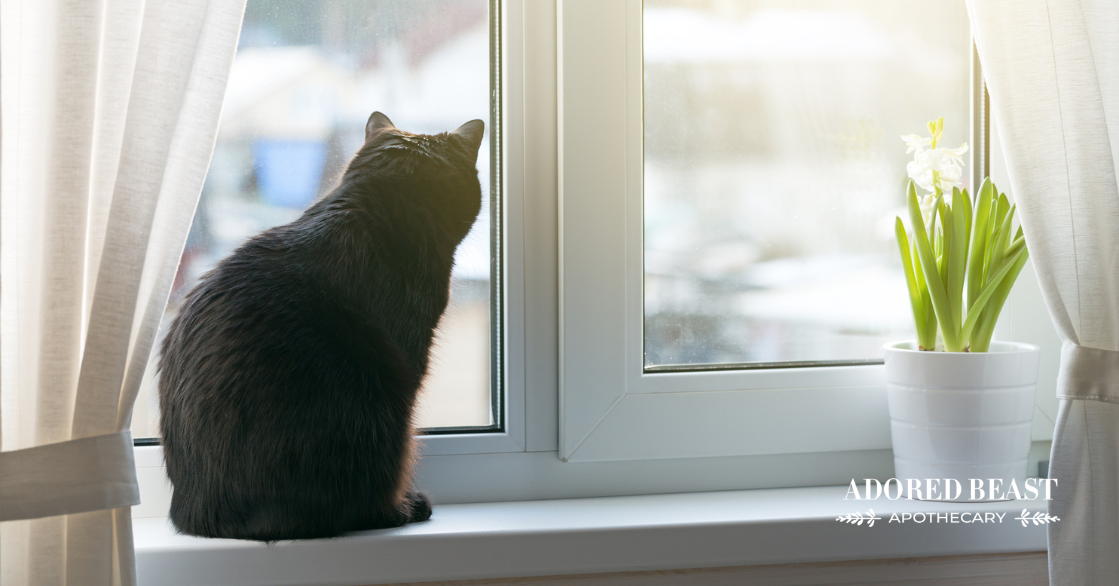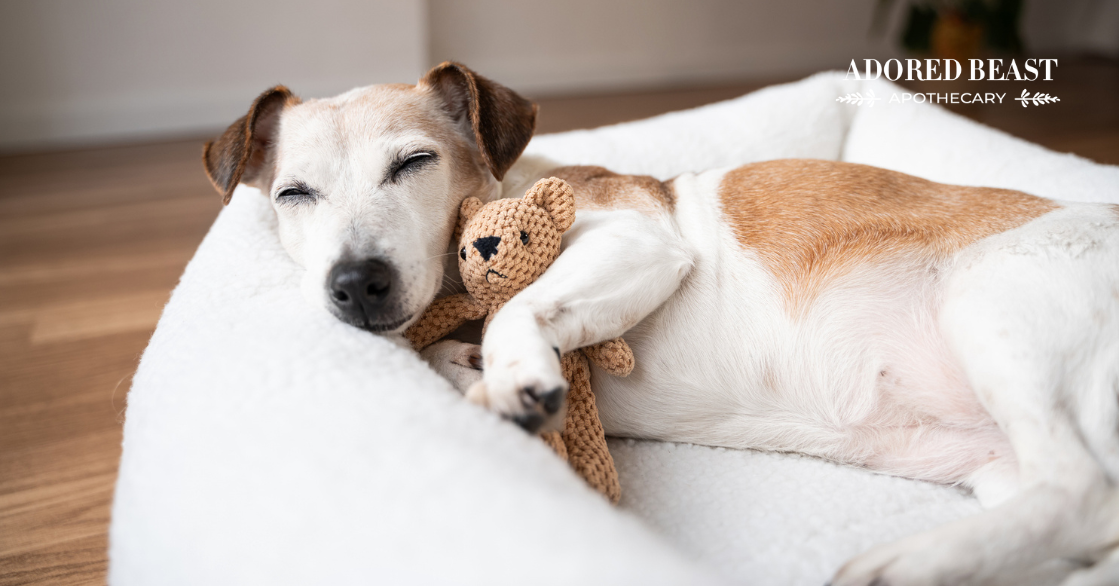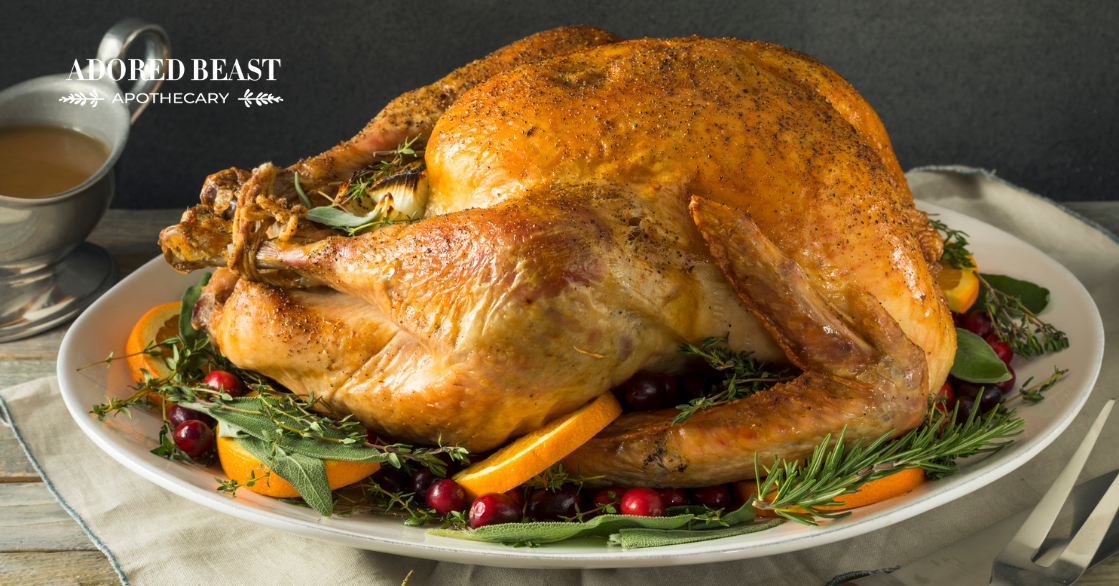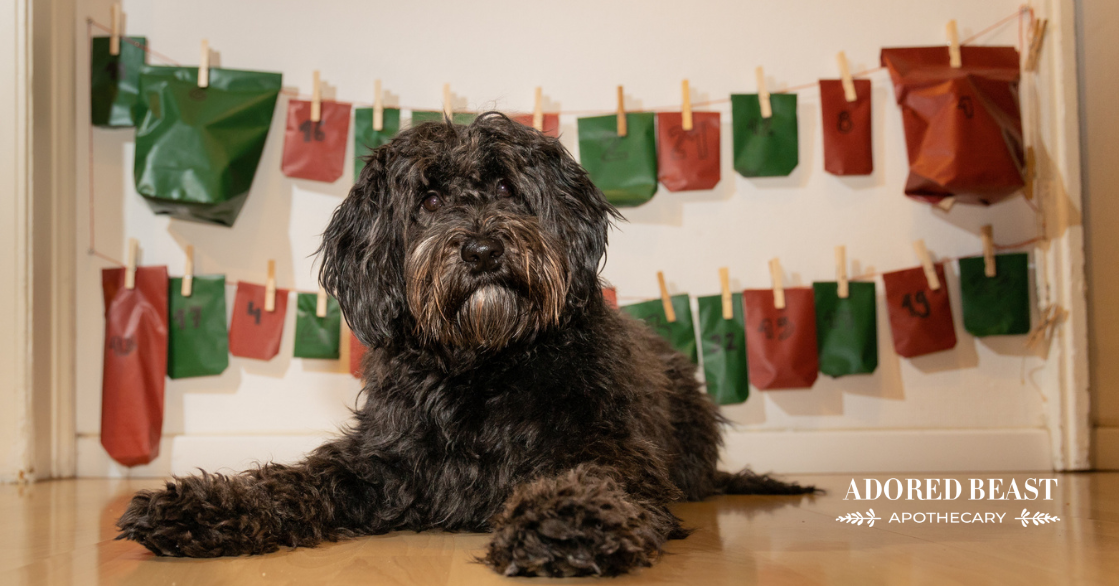A few years ago, we started to notice our big bear Colty was having a little trouble seeing. He was less in tune to things around him, and we noticed he would sometimes bump into things, especially if it was something that wouldn’t normally be there. He didn’t seem to mind, he just rebounded and went on his merry way. With his cataract diagnosis, we got the confirmation: our big man was going blind.
Discovering that your dog is going blind can be a terrifying thing to learn. Concern over health and wellbeing moving forward, and wondering if they’ll be ok, are typical in those early days.
Fortunately, most dogs adapt quite well to a loss of vision. Blind dogs can live long, happy, healthy lives with just a few adjustments.
Living with and supporting a blind dog doesn’t have to be a big deal! With a few simple tips and changes to routine and lifestyle, your dog can be back to living life to the fullest with very little interruption.
How Dogs Lose Their Sight
There are several different ways a dog can lose their vision. Some may be born blind, while others lose sight over time as a result of a health condition or trauma.
These can include:
- Diabetes (cataracts)
- Glaucoma
- SARDs (Sudden Acquired Retinal Degeneration)
- Retinal detachment (from diseases like high blood pressure, hypothyroid, etc. Always check for underlying issues to prevent eye disease of any sort)
- Cataracts
- Injury to the eye
Blindness can also just occur as a normal part of the aging process with general deterioration.
Depending on the cause, the procession may be quick or gradual. In some cases, as with glaucoma, treatment may be able to slow the progression significantly. In other cases, there may be no cure or treatment.
These are some of the signs that your dog may exhibit if they’re losing their vision:
- Cloudy eye(s)
- Redness or swelling at the eyes
- Eye irritation
- Enlarged pupils
- Bumping into objects (furniture, walls)
- Unable to locate food/water dishes
- Unwilling to go up or down stairs, or jump onto furniture
- General clumsiness
- Jumpiness
- Apprehensive during play
- Depression
- Sleeping more than usual
- Anxiety
[RELATED] Deaf Dog Awareness: Causes, Training, & Protection
Tips for Supporting a Blind Dog
Once you realize your dog is losing their site, there are several things to remember, and do, to ensure they are able to go through life as they did prior to going blind. These tips can play a big role in allowing your dog to adapt quickly.
- Don’t move the furniture. Chances are, your pet knows the layout of your house pretty well, so try not to move anything around. You want to make sure it’s easy for your pet to navigate. Keep hallways and walkways clear, and consider what might be an obstacle.
- Re-teach stairs. If you have stairs in the house, ones your pet uses/needs to use, make sure you take the time to re-teach them. Keep a close eye on your dog as they relearn them, or as they use them as vision loss progresses. Consider getting stair treads to help make them easier. And if the stairs aren’t needed, consider a baby gate to block them off. Consider using different scents (essential oils, cologne, even food flavourings such as vanilla) at the top and bottom of each staircase. This reminds your dog of the location of the stairs and where they are as they move around the house so there are no accidents.
- Get down to their level to find any potential threats. We easily miss things that could hurt our animals if they’re not at our eye level. Crawl around to see what’s at theirs! Put padding on sharp corners of tables where your dog can bump into and get hurt.
- Keep your dog’s food, water, and bed in the same spot. As your blind dog readjusts to life without sight, you want to make sure the things that are important are constant. Food bowls, water bowls, and beds should all stay in the same spot so they’re easy to find. Also, consider raising them so they don’t walk into their bowls.
- Stay active. Just because your dog can’t see, that doesn’t mean they can’t be active! Make sure that you are still providing the same level of physical and mental stimulation your dog was getting before the vision loss. Play, walk, swim – while agility or flyable may not be on the list anymore, there are still plenty of things your blind dog can do. Hide treats in places they can easily find in the yard and let them use their nose to find them – but make sure they find them!
- Let them chew. Consider raw bones to chew. This helps stimulate endorphins and works out muscles in the jaw. It’s also stimulating mentally, which is so important.
- Teach new tricks. Training can help speed up the process of rebounding with a blind dog. Teaching them new tricks can take effort, but it’s well worth it, and the mental stimulation is crucial. One of the most important (if your dog does’t already know it) is “stop” – you are their eyes now, and this one is so important for safety.
- Make it easy to find you. One particularly useful tip for outdoors is to attach bells (small, kitty cat bells should be sufficient) to yourself, or carry one with you. Some people attach them to the laces of their dog-walking footwear, while others pin them to clothing. This way, your dog can find you more easily in your yard or relax on a walk using a long line, knowing you are audible, therefore, close by.
- Talk to your pup. This goes without saying. If you are living with a blind dog, obviously they can’t see you, so talk to them! Let them know you’re there. Your voice is soothing, especially when your pet is anxious, so help them cope with their new lifestyle by talking them through it.
💙 Colty has since crossed the rainbow bridge, but even with his loss of vision his last few years were very happy. A few changes and he adapted so quickly, and his quality of life went unchanged.
Taking care of and supporting a blind dog does take some special effort. But with love and time, both of you can adjust to this new way of life. Just because your dog cannot see as well as they used to, doesn’t mean their quality of life has to suffer. Showering a blind dog with love and affection will help them through it, and they’ll be back to their old selves in no time at all!












